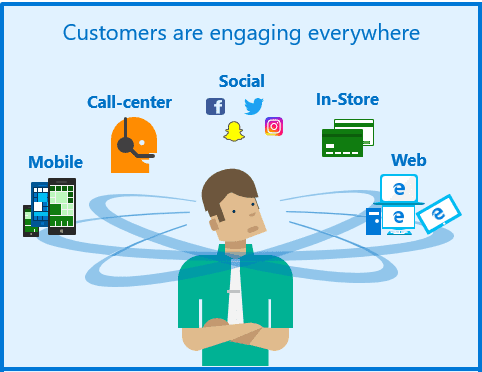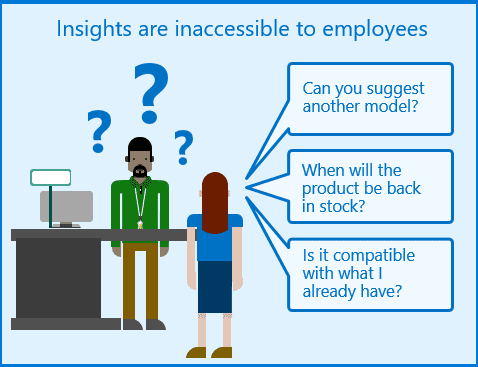How integrating your retail system solves four all-too-common pain points
Today when you’re thinking about a new purchase, pulling out your phone and checking the product online is probably an unconscious part of your routine. Given all the different channels of engagement, consumers are empowered to shop around, compare prices, and make sure they’re getting the right product at the right price while still shopping in your store. In fact, 84% of store visitors report using digital for shopping-related activities before or during their most recent trip to a store.[i] This constant comparison is great for consumers but increases the pressure on retailers to provide exceptional customer service at competitive value. Considering that net profit margins for the retail industry have averaged just above 3%, retailers that want to grow profits need to adapt by increasing their efficiency while at the same time providing more personal and compelling customer service.
To stay competitive and grow, retailers need to drive efficiency into the business by addressing these four major pain points:
- Higher Customer Expectations: Customers expect to engage with retailers seamlessly across multiple channels, anytime, anywhere.
- Disconnected System Landscape: Maintaining a diverse landscape of operating systems to address these channels leads to multiple, siloed data sources and higher costs.
- Too Much Data, Not Enough Knowledge: Retailers have high volumes of data produced by multiple touchpoints but are often unequipped to know how to leverage valuable insights from that data.
- Disadvantaged Sales Associates: Employees are less informed than their connected customers, making it difficult to provide a truly personal level of service.
Ultimately, those who can create a differentiated customer experience within a tight cost model will be the be the next big winners in retail. Solving the pain points through a common platform across channels and effectively using insights from data will enable retailers to deliver an exceptional customer experience in a cost effective and scalable way. Let’s explore how integrated management systems empower retailers to tackle all four pain points and differentiate themselves in an increasingly competitive market.
High customer expectations: Customers expect omni-channel engagement
While storefronts remain the primary avenue of purchase, mobile has become the primary method of initial engagement. During Black Friday 2016, over 50% of visits to retail websites were on mobile devices, and mobile shopping broke $1B in sales.[ii] Since people are starting on mobile apps and completing their purchase in the store, or vice versa, it’s no surprise that 85% of customers expect a seamless experience across all channels.[iii] Today, 50% of consumers count on retailers to have options to buy online and pick up in store,[iv] a step that requires retailers to have real time integration across digital and brick and mortar commerce engines.
The best way to enable these cross-channel services is to implement a unified solution with a single commerce engine. This ensures customers experience the same brand messaging and product information across every channel with a single data source. By providing consistent information, costs are cut by streamlining the transaction record, errors are reduced, and the shopping experience is frictionless and flexible to meet the consumer’s need to make an anywhere, anytime purchase decision.
Disconnected system landscape: Different channels have siloed data
An online presence is a necessity in today’s world, but many retailers often host their online data on disparate platforms or legacy systems – completely siloed from physical store data. Because of this, retailers can’t track business real time across the channels and inventory, sales trends, and customer profiles must be synced between the systems with complex integrations. To truly operate an omni-channel operation cost effectively, a retailer must be able to see and predict inventory issues quickly, as selling seasons are shorter and spikier than ever. Approximately 30% of retail sales occur during the 5 to 6 weeks of holiday season,[v] yet they are based on planning and stock commitments made months earlier. Optimizing stock across channels and reacting quickly to make adjustments will reduce costly excess inventory and lost sales due to stockouts, positively impacting profits during the critical seasonal selling periods.
To enable this communication between stores and digital, retailers need a system that aids them in tracking and saving records across channels so that orders can be updated in-store or online. Connecting a variety of sales channels gives retailers an unprecedented view into every point on their supply chain and can help shape sales and promotion strategies.
Too much data, not enough knowledge
Data without analysis provides no insight for retailers to gain useful insights from their transactional and master data, they first need to store, sort, and analyze it. Many retailers are not equipped to efficiently store their data, limiting their ability to draw out insights in a fast and meaningful way. When data is stored, it is often not analyzed effectively, wasting an opportunity to turn the cost of managing data into a profit source. According to a recent IDC report, by 2017, retail companies that take advantage of all their company data can potentially realize an additional $94 billion in revenue over companies that don’t.
How, then, can retailers wade through the data overload? It’s critical that they implement a system that comes with advanced analytics and insight capabilities built in. This allows them to quickly view key performance indicators and drill into data from all channels to gain real insights and take actions. A cloud-enabled platform makes it easy for teams to access up-to-date reports on any device, in any context. This streamlines decision making, enabling retailers to find and respond to trends faster and understand exactly how channels are performing in relation to one another and historical trends.
Disadvantaged sales associates: lack access to customer insights
Consumers rank personalized service and smart recommendations among the factors they value most when shopping in store[vi]. One example from Black Friday 2016 drives this home –16.5% of sales were driven through shopper research sites like RetailMeNot and CNET; a significant increase from last year.[vii] To have well trained and informed sales associates can be a costly and uphill battle. Wages continue to be low for retail workers and turnover is high. Staffing for seasonal surges means that often new staff is added with minimal training. Today, the playing field is stacked against the sales associate. Because they lack quick access to the product information that is available to customers online, it diminishes their ability to have an informed, real-time conversation. To be a leading retailer with best in class service, sales associates should be able to provide value-added personal services by using the information at their fingertips.
With a consolidated management system, retailers can bring their customer and merchandise information together to help employees recommend the right products to the right customers. A connected, mobile POS system can quickly connect customer history, loyalty status, product, and promotional information and provide the targeted insights employees need to have great interactions with informed customers. Joined with advanced machine learning and analytics, cross sell and upsell suggestions can be provided that are targeted to the individual. Instead of using a canned suggestion, this allows the sales associate to provide a more impactful experience for the customer. These connected systems can also generate personalized offers over digital channels so customers experience the same great service online. Personalization, whether in-store or online, can make all the difference – according to Gartner, organizations that incorporate personalization into digital commerce will increase revenue up to 15 percent by 2018.[viii]
Get started today
Microsoft is ready to help retailers with their easily-deployed Dynamics 365 for Retail. Dynamics 365 is a comprehensive omnichannel solution that provides out of the box analytics for every part of your business. Scalable and global, Dynamics 365 can grow with your business with streamlined business processes and cost effective cloud powered infrastructure. The solution is flexible and integrates with existing technology, so it can be deployed with or without an existing POS.
By implementing an end-to-end integrated retail management system, retailers are poised to dramatically increase efficiency and bolster their customer engagements across all channels. Learn how your business can leverage consumer mobile interaction to differentiate and drive customer loyalty.
And if you’re heading to the National Retail Federation’s BIG Show 2017, make sure to visit us in our Microsoft Booth #2803 and see Dynamics 365 for Retail for yourself!
[i] The New Digital Divide. Deloitte, 2014
[ii] http://www.businesswire.com/news/home/20161126005005/en/Media-Alert-Adobe-Data-Shows-Black-Friday
[iii] Sterling Commerce, an IBM Company, Cross-Channel Brand Interaction: 2010 Consumer Preferences, 2010.
[iv] Accenture, Customer Desires vs. Retailer Capabilities, 2014
[vi] The State of Retail 2016. TimeTrade, 2016
[vii] http://www.businesswire.com/news/home/20161126005005/en/Media-Alert-Adobe-Data-Shows-Black-Friday








